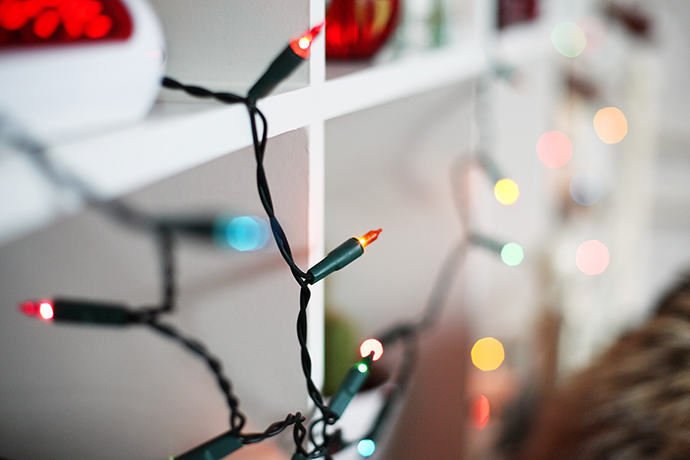Ask an Expert: Safety First During Holiday Season
 The holiday season can be the most wonderful time of the year, but it’s important to keep safety in mind so you can avoid accidents and injuries. Consider these tips.
The holiday season can be the most wonderful time of the year, but it’s important to keep safety in mind so you can avoid accidents and injuries. Consider these tips.
TOY SAFETY
According to the Consumer Product Safety Commission, about 260,000 children were treated in emergency rooms in the United States for toy-related injuries in 2016 and 2015. Tips for selecting toys:
1) Consider the age recommendations on the toy, combined with the child’s skill set and interests.
2) Check out all safety labels to see if the item is flame retardant, flame resistant, washable, non-toxic, etc.
3) Be sure to check warning labels for choking hazards and other concerns. The toilet paper roll test is a good one to use. If the item fits through a toilet paper roll tube, it is probably a choking hazard.
4) Inspect all toys for sharp points, edges, materials used (glass, metal, brittle plastics) and any removable parts that may pose a hazard if lost or removed. Before giving toys with these hazards, carefully consider the child’s age, as well as the ages of younger siblings. This can be a particular problem with game pieces and parts that are safe for older family members, but could be dangerous if left around for babies and toddlers to find.
5) Provide proper safety equipment such as helmets and knee pads for bikes, scooters, skateboards, etc.
6) Are there strings, cords or ribbons that have the potential to cause strangulation? Long cords on pull toys could be a problem, as well as hanging mobiles in cribs and playpens.
7) If paints, crayons or art markers are on your list, look on the packaging for “ASTM D-4236.” This means the product has been properly reviewed for potentially toxic contents.
8) Inspect toys for damage and make repairs if needed. Keeping toys, play equipment and protective gear in good repair will also help protect children from injury.
9) To receive notices of recalls, visit www.recalls.gov. If you think you may have a toy in your home that has been recalled, check the Consumer Product Safety Commission (CPSC) website at www.cpsc.gov/en/Recalls.
To report a dangerous product or a product-related injury, go to www.SaferProducts.gov or call the CPSC’s Hotline at (800) 638-2772. You can also obtain news releases and recall information on Twitter @OnSafety or by subscribing to the CPSCs free email newsletters.
ELECTRICAL SAFETY
This time of year, there are far too many house fires associated with electrical mishaps. When buying and using decorations with electricity, consider these reminders:
1) Only buy electrical equipment that displays a label showing a nationally recognized safety testing laboratory such as Underwriters Laboratories (UL), Intertek (ETL), or Canadian Standards Association (CSA).
2) Be sure to buy decorations and extension cords according to your intended use, whether outdoors or indoors.
3) Do not overload extension cords and multi-plug power strips, and do not chain them together.
4) Check for cords that are worn out, frayed or split.
5) Make sure that cords are not pinched in doors, windows or under heavy furniture, which could damage the cord’s insulation.
6) Do not remove the ground pin, use a converter to make a three-prong plug fit a two-prong outlet.
7) Keep outdoor extension cords clear of snow and standing water.
8) Send warranty and product registration forms to manufacturers in order to be notified promptly in the event of a product recall.
9) Keep decorations and cards away from fires and other heat sources such as light fittings.
10) If you have old Christmas lights, consider buying new ones. Newer options will meet much higher safety standards.
11) Don't let children play with lights, as they could swallow the bulbs, and remember to switch off the lights when going out of the house or to bed.
12) Consider LED lights. They generate less heat — which translates into greater energy-efficiency, but they are also less of a fire risk. LEDs are made with epoxy lenses rather than glass and are much more durable.
13) If you have an artificial tree, choose one that is tested and labeled as fire resistant.
14) Be wise and cautious when using space heaters, and make sure smoke alarms are working.
FOOD SAFETY
While our food supply is one of the safest in the world, some 76 million people a year get sick from food-borne illness, according to the Centers for Disease Control. Consider these food safety tips.
1) Clean – hands, cutting boards, tools, etc.
2) Separate – keep raw meats away from other foods, and use separate cutting boards for raw food.
3) Cook properly – cook foods to the right temperatures, and use a thermometer. Reheat leftovers to 165 F.
4) Chill – chill food promptly and properly. Illness-causing bacteria can grow in perishable foods within two hours unless they are refrigerated. Quickly cool down large batches of soups, stews, etc., and store them in shallow pans. Thaw meats in the refrigerator.
5) Be especially careful of higher risk foods, such as raw eggs. Eating cookie dough is probably not a wise idea, and neither is drinking homemade eggnog if the eggs used have not been pasteurized.
For further information, visit www.foodsafety.gov.
By: Teresa Hunsaker, Utah State University Extension family and consumer sciences educator, 801-399-8200
What Next?
Get useful tips like this as soon as we release them. Sign up here.


 Utah 4-H & Youth
Utah 4-H & Youth